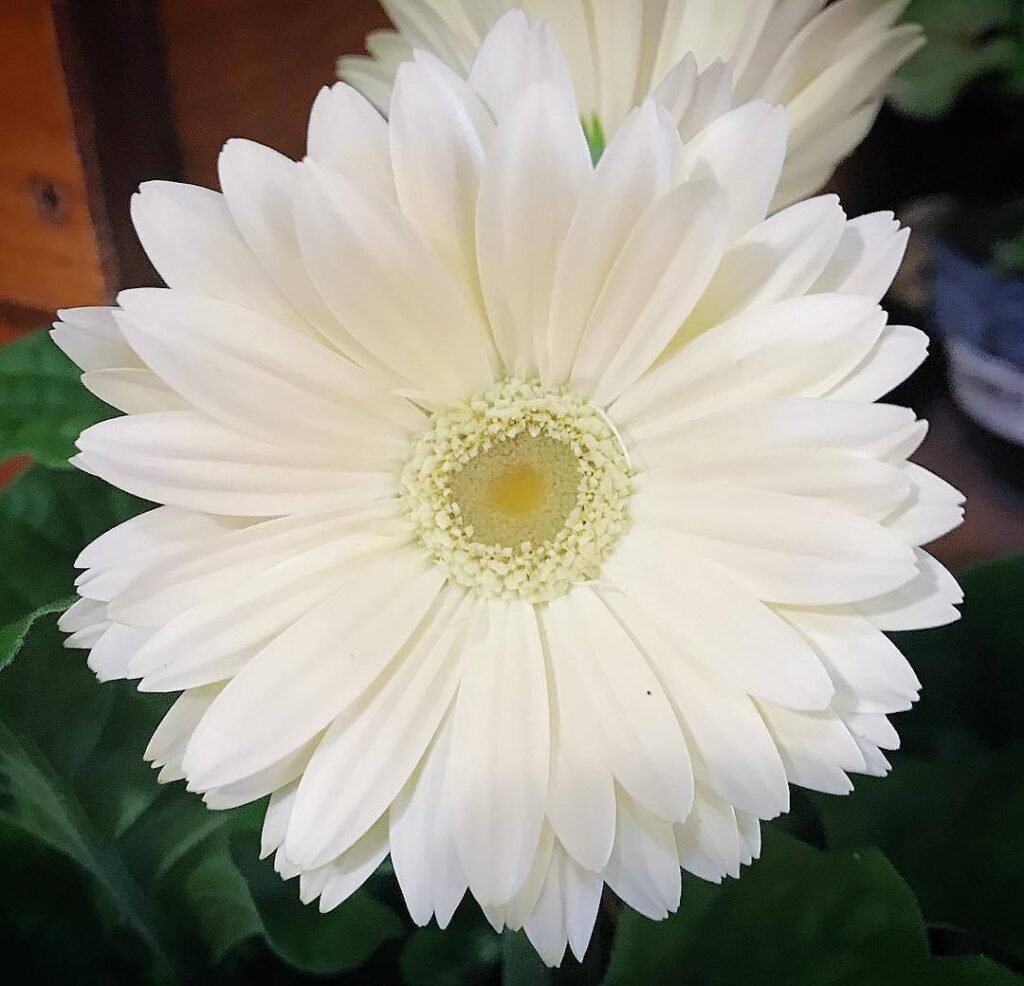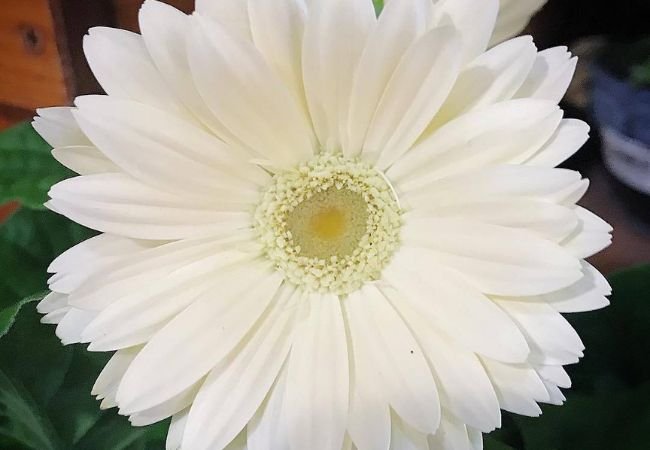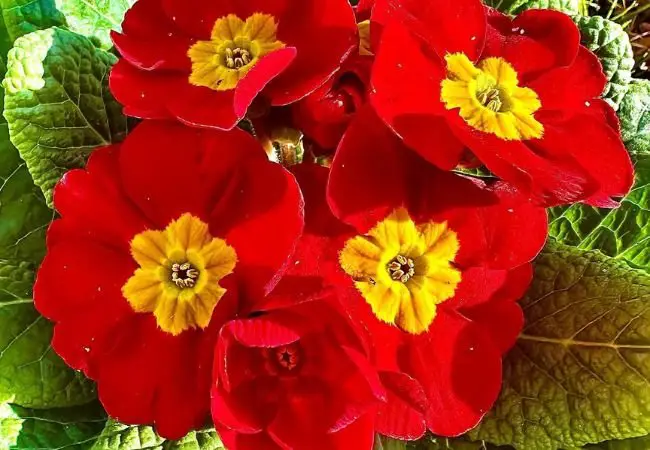White Gerbera Daisy (Gerbera jamesonii) are elegant, daisy-like flowers known for their large, pristine white blooms. They thrive in well-draining soil, require full sun to partial shade, and prefer temperatures between 59-75°F (15-24°C). Regular watering, balanced fertilization, and proper air circulation are key to their health and abundant blooming.
As a floriculturist with over 15 years of experience specializing in ornamental flowers, I’m excited to share my knowledge about the beautiful White Gerbera Daisy. This comprehensive guide will help you successfully grow and care for these stunning flowers in your garden or home.
Here’s a concise and verified information chart for White Gerbera Daisies:
| Category | Details |
|---|---|
| Botanical Name | Gerbera jamesonii |
| Common Name | White Gerbera Daisy |
| Plant Name | Gerbera Daisy |
| Zone | 8-11 |
| Sun Exposure | Full Sun to Partial Shade |
| Soil Type | Well-drained, rich in organic matter |
| Watering | Keep soil consistently moist, but not waterlogged |
| Growth Habit | Compact and bushy |
| Height/Spread | 12-18 inches tall, 12-18 inches wide |
| Special Features | Long-lasting blooms, attractive to pollinators, and versatile for containers or garden beds |
Introduction to White Gerbera Daisies

Botanical Information
- Scientific Name: Gerbera jamesonii
- Family: Asteraceae
- Origin: South Africa
Characteristics
- Flower Size: 2-5 inches in diameter
- Plant Height: 8-24 inches
- Bloom Time: Spring through fall
- Foliage: Dark green, deeply lobed leaves
For more detailed botanical information, visit the Royal Horticultural Society’s Gerbera page.
Growing White Gerbera Daisies
Ideal Growing Conditions
- Sunlight: Full sun to partial shade
- Soil: Well-draining, slightly acidic (pH 5.5-6.5)
- Temperature: 59-75°F (15-24°C)
- Hardiness Zones: 8-11 (can be grown as annuals in cooler zones)
Planting Process
- Choose a location with adequate sunlight and good air circulation
- Prepare the soil by adding organic matter and ensuring good drainage
- Dig a hole twice the size of the root ball
- Place the plant at the same depth it was in its container
- Backfill with soil and water thoroughly
- Space plants 12-18 inches apart
For container planting, ensure pots have drainage holes and use a high-quality potting mix.
Caring for White Gerbera Daisies
Watering
- Keep soil consistently moist but not waterlogged
- Water at the base of the plant to avoid wetting the foliage
- Reduce watering in winter for outdoor plants in mild climates
Fertilizing
- Apply a balanced, water-soluble fertilizer every 2-3 weeks during the growing season
- Use a fertilizer with an NPK ratio of 10-10-10 or similar
- Reduce fertilization in winter
Pruning and Deadheading
- Remove spent blooms regularly to encourage continuous flowering
- Trim yellowing or damaged leaves at the base
- Cut back plants in late winter or early spring to rejuvenate growth
For more information on pruning techniques, check out this guide from the University of Minnesota Extension.
Pest and Disease Management
Common issues include:
- Whiteflies
- Spider mites
- Powdery mildew
- Root rot
Preventive measures:
- Ensure good air circulation
- Avoid overhead watering
- Regularly inspect plants for early signs of problems
For more on Gerbera pest management, visit the Penn State Extension’s flower pest guide.
Propagation
White Gerbera daisies can be propagated through:
- Division of mature plants in spring
- Seeds (though this method may not produce true-to-type flowers)
Steps for division:
- Carefully dig up the entire plant
- Separate the crown into sections, each with roots and leaves
- Replant divisions immediately and water well
Indoor Growing
White Gerbera daisies can be grown as houseplants:
- Place in a bright location with some direct sunlight
- Maintain temperatures between 65-75°F (18-24°C)
- Use a well-draining potting mix
- Provide good air circulation to prevent fungal issues
Seasonal Care
Spring
- Resume regular watering and fertilizing
- Divide and replant if needed
Summer
- Monitor for heat stress in hot climates
- Continue deadheading for continuous blooms
Fall
- Reduce fertilization as growth slows
- Prepare to bring potted plants indoors in cooler regions
Winter
- Protect outdoor plants from frost in borderline hardy zones
- Reduce watering and fertilizing for indoor plants
Using White Gerbera Daisies in Floral Design
White Gerberas are versatile in floral arrangements:
- As focal flowers in bridal bouquets
- In modern, minimalist centerpieces
- Combined with colorful flowers for striking contrasts
- In monochromatic white arrangements for elegant events
For floral design inspiration, check out the American Institute of Floral Designers.
Environmental Benefits
Gerbera daisies, including white varieties, offer several ecological advantages:
- Attract pollinators like bees and butterflies
- Can be used in cut flower gardens, reducing the need for commercially grown flowers
- Suitable for water-wise gardening when established
White Gerbera daisies are stunning flowers that can bring elegance and cheer to any garden or indoor space. With their large, pristine blooms and relatively easy care requirements, they’re an excellent choice for both novice and experienced gardeners. By following the guidelines in this guide, you can ensure your white Gerberas thrive and produce abundant blooms throughout the growing season.
Remember, the key to success with white Gerbera daisies lies in providing them with well-draining soil, adequate sunlight, and proper care. With attention to their needs, these beautiful flowers will reward you with their charming blooms for months on end.
For more information on growing a variety of daisies, visit the National Garden Bureau’s daisy page.
For more gardening tips and plant care guides, visit usagardenhub.com.







One comment on “White Gerbera Daisy : A Complete Guide to Growing and Caring for This Elegant Bloom (2024)”